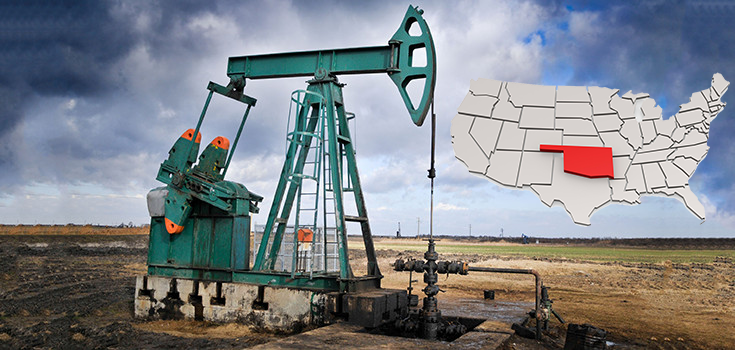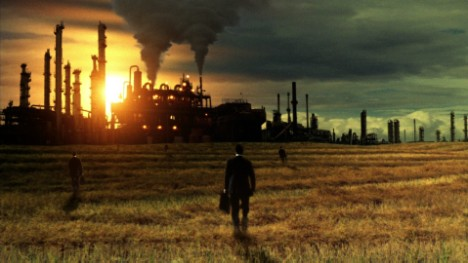Opinion: Dirty Little Secret About Natural-Gas Fracking: Fugitive Methane Emissions
July 10, 2015
According to recent research, the global-warming impact of FMEs is two-thirds greater than coal’s over the near term

Credit: Amanda Brown
R. William Potter
In energy circles, conventional wisdom holds that natural gas is the ideal clean and cheap “transition fuel.” TV ads tell us that gas is the bridge from the fading era of fossil fuels to a newly emerging sustainable future based on renewable energy (solar and wind).
Don't believe it.
As so often is the case, what passes as conventional wisdom turns out on closer inspection to be flat-out wrong or at best half true. In fact, available data and numerous studies now show that natural gas -- depending on its source -- can be as bad if not much worse for planetary health than coal, the usual nemesis.
When natural gas's impacts on the environment are measured only at the point of consumption, gas is both cheaper and cleaner than burning coal to produce electricity. As gas-industry advertisers intone, “natural gas has half the CO2 footprint of coal” or “clean-burning gas has half the carbon footprint of coal.”
True enough at the burner tip. But when gas is measured across the entire fuel cycle -- from drilling, extraction, and transmission through rapidly-built pipelines to the burner tip, a very different, and potentially ominous picture emerges.
The problems start with the production segment of the fuel cycle. Increasingly, new sources of gas come from fracking. This process drives chemicals and water through wells at very high pressure to split open (fracture) sedimentary rock, trapping gas fields that can be forced to the surface.
Fracking is rapidly becoming the new source of gas for New Jersey utilities, arriving here from hundreds of wells across Pennsylvania’s Marcellus shale formations, where a
frenzy of drilling is leading to hurried efforts to lay pipelines across both states, generating a great deal of opposition along the way.
Fracking can pollute local groundwater, residential wells, and waterways -- besides triggering earthquakes, as in Oklahoma – while also fouling the air. Much worse, however, the process releases fugitive methane emissions (FMEs), a major contributor to global warming and climate change that is threatening to everyone.
How bad is FME? Worse than burning coal in the near term. That’s because methane gas remains suspended in the atmosphere for “only” 10-20 years, compared with carbon dioxide), the major greenhouse gas by volume from coal, which stays airborne for a century or more.
When measured over a two-decade period, methane pollutants do far more climate damage than carbon. The estimates of FME impacts over that 10-20 year period vary from a low of 70 percent of coal (according to the natural-gas industry) to a high of 400 percent greater than the carbon footprint of coal, according to independent researchers at the NASA Goddard Space Institute. If we average the published estimates, natural gas has a global-warming footprint that’s 167 percent of coal’s -- or two thirds greater impact over the near term.
(There is a short
informative video on methane and its role in global warming available online, featuring Dr. Drew Shindell, a leading climate scientist formerly with Goddard and now at Duke.)






























Back in the 1930s, Henry Ford is supposed to have remarked that it was a good thing that most Americans didn't know how banking really works, because if they did, "there'd be a revolution before tomorrow morning".
Last week, something remarkable happened. The Bank of England let the cat out of the bag. In a paper called "Money Creation in the Modern Economy", co-authored by three economists from the Bank's Monetary Analysis Directorate, they stated outright that most common assumptions of how banking works are simply wrong, and that the kind of populist, heterodox positions more ordinarily associated with groups such as Occupy Wall Street are correct. In doing so, they have effectively thrown the entire theoretical basis for austerity out of the window.
To get a sense of how radical the Bank's new position is, consider the conventional view, which continues to be the basis of all respectable debate on public policy. People put their money in banks. Banks then lend that money out at interest – either to consumers, or to entrepreneurs willing to invest it in some profitable enterprise. True, the fractional reserve system does allow banks to lend out considerably more than they hold in reserve, and true, if savings don't suffice, private banks can seek to borrow more from the central bank.
The central bank can print as much money as it wishes (Look up the term FIAT currency). But it is also careful not to print too much. In fact, we are often told this is why independent central banks exist in the first place. If governments could print money themselves, they would surely put out too much of it, and the resulting inflation would throw the economy into chaos. Institutions such as the Bank of England or US Federal Reserve were created to carefully regulate the money supply to prevent inflation. This is why they are forbidden to directly fund the government, say, by buying treasury bonds, but instead fund private economic activity that the government merely taxes.
It's this understanding that allows us to continue to talk about money as if it were a limited resource like bauxite or petroleum, to say "there's just not enough money" to fund social programmes, to speak of the immorality of government debt or of public spending "crowding out" the private sector. What the Bank of England admitted this week is that none of this is really true. To quote from its own initial summary: "Rather than banks receiving deposits when households save and then lending them out, bank lending creates deposits" … "In normal times, the central bank does not fix the amount of money in circulation, nor is central bank money 'multiplied up' into more loans and deposits."
In other words, everything we know is not just wrong – it's backwards. When banks make loans, they create money. (Look up the term Fractional Banking) This is because money is really just an IOU. The role of the central bank is to preside over a legal order that effectively grants banks the exclusive right to create IOUs of a certain kind, ones that the government will recognise as legal tender by its willingness to accept them in payment of taxes. There's really no limit on how much banks could create, provided they can find someone willing to borrow it. They will never get caught short, for the simple reason that borrowers do not, generally speaking, take the cash and put it under their mattresses; ultimately, any money a bank loans out will just end up back in some bank again. So for the banking system as a whole, every loan just becomes another deposit. What's more, insofar as banks do need to acquire funds from the central bank, they can borrow as much as they like; all the latter really does is set the rate of interest, the cost of money, not its quantity. Since the beginning of the recession, the US and British central banks have reduced that cost to almost nothing. In fact, with "quantitative easing" they've been effectively pumping as much money as they can into the banks, without producing any inflationary effects.
What this means is that the real limit on the amount of money in circulation is not how much the central bank is willing to lend, but how much government, firms, and ordinary citizens, are willing to borrow. Government spending is the main driver in all this (and the paper does admit, if you read it carefully, that the central bank does fund the government after all). So there's no question of public spending "crowding out" private investment. It's exactly the opposite.
Why did the Bank of England suddenly admit all this? Well, one reason is because it's obviously true. The Bank's job is to actually run the system, and of late, the system has not been running especially well. It's possible that it decided that maintaining the fantasy-land version of economics that has proved so convenient to the rich is simply a luxury it can no longer afford.
But politically, this is taking an enormous risk. Just consider what might happen if mortgage holders realised the money the bank lent them is not, really, the life savings of some thrifty pensioner, but something the bank just whisked into existence through its possession of a magic wand which we, the public, handed over to it.
Historically, the Bank of England has tended to be a bellwether, staking out seeming radical positions that ultimately become new orthodoxies. If that's what's happening here, we might soon be in a position to learn if Henry Ford was right.